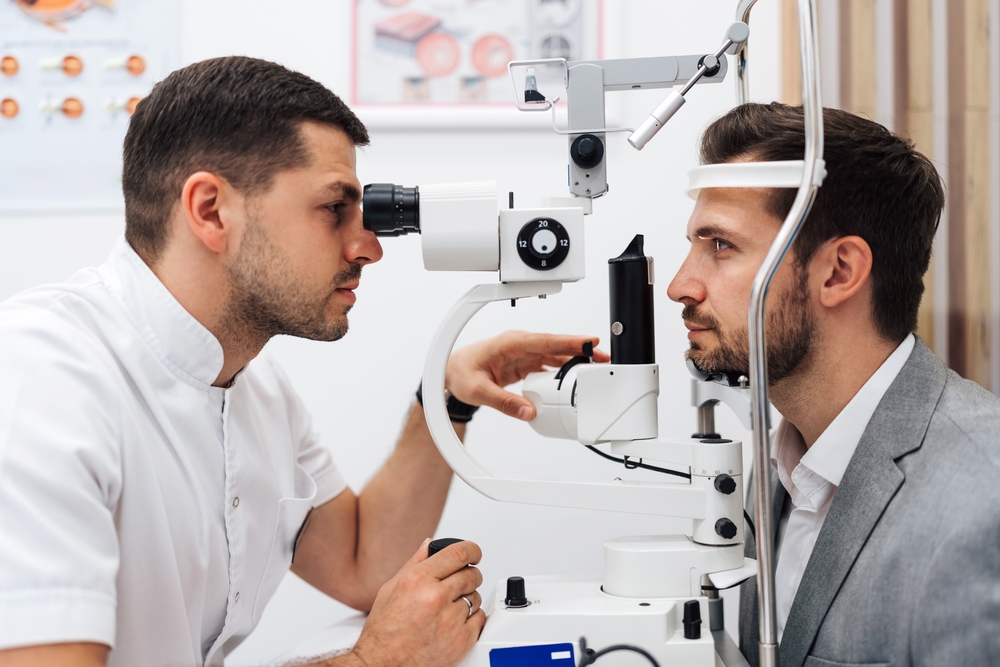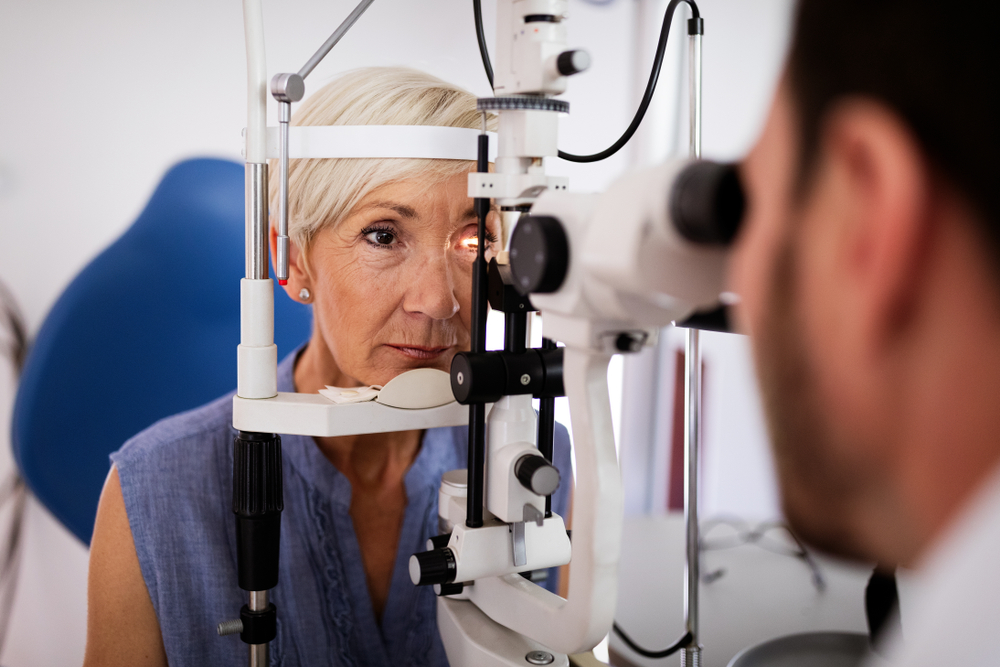Often called “the silent thief of sight,” glaucoma is one of the most common age-related eye conditions. According to the Centers for Disease Control and Prevention, it is the second leading cause of blindness worldwide.
Because glaucoma most often affects the vision of older adults, many people wonder at what age they should start screenings for glaucoma. Keep reading to learn more about what age you should start worrying about glaucoma and the steps you can take to prevent this common condition from stealing your sight.
What is Glaucoma?

Glaucoma is a group of eye conditions that occur when the fluid in the eye, the aqueous humor, doesn’t drain properly, leading to a buildup of eye pressure. As pressure increases, it can cause permanent damage to the optic nerve, the structure in the eye responsible for carrying visual information from the eye to the brain.
While there are several types of glaucoma, the most common is open-angle glaucoma, which accounts for approximately 90% of all cases. This type of glaucoma can take many years to fully develop, and is often painless and asymptomatic in its earliest stages.
However, once symptoms develop, the damage is permanent, and vision loss cannot be reversed. This is why attending glaucoma screenings with your eye doctor is crucial to protecting your vision from the condition.
What is the Best Age to Start Glaucoma Screening?

While glaucoma can occur at any age, the risk of developing glaucoma increases significantly after age 40. Most ophthalmologists recommend that at 40, adults have a comprehensive eye exam to check for common signs of glaucoma, even if they have no symptoms or other vision issues.
Because glaucoma develops slowly, it can take many years for a patient to experience symptoms. Eye examinations are the best way to catch the condition in its earliest stages and to prevent future vision loss.
People over age 60 are at the greatest risk for glaucoma. They are approximately six times more likely to develop the condition than younger individuals.
As the eyes age, ocular pressure may start to increase naturally, the health of the optic nerve may decline, and other age-related eye conditions and chronic health conditions can compromise overall eye health. If you are over 60, you should schedule a comprehensive eye exam that includes screening for glaucoma every one to two years.
Although there is no cure for the condition, timely treatment can slow its progression and preserve your vision.
Are There Other Risk Factors for Glaucoma?
Patients at a higher risk for developing the condition should begin having regular comprehensive eye exams before age 40. Some of the factors that may put you at a higher risk for glaucoma include:
Family History
Glaucoma tends to run in families, and your risk is significantly increased if you have a close relative with the condition.
Ethnicity
Individuals who are African American, Hispanic, or Asian are more likely to develop glaucoma.
Chronic Health Conditions
Increased intraocular pressure can be a complication of both diabetes and hypertension (high blood pressure) and can contribute to optic nerve damage.
High Eye Pressure (Ocular Hypertension)
Some people have naturally higher levels of eye pressure, a condition known as ocular hypertension, which increases the risk of glaucoma.
Past Eye Injuries or Surgeries
Past eye injuries and surgeries can increase your risk of developing secondary glaucoma, a rarer type of the condition.
If you have any of these factors that may put you at a higher risk for glaucoma, you should consult your ophthalmologist at Batra Vision Medical Group about when and how often you should have your eyes checked for signs of the condition.
How Do Eye Doctors Test for Glaucoma?

Tests for glaucoma are typically included in a comprehensive eye exam. When checking for glaucoma, your eye doctor may perform the following tests:
Eye Pressure Testing (Tonometry)
During eye pressure testing or tonometry, your ophthalmologist uses a small instrument or forceful puff of air to test intraocular pressure.
Visual Field Testing (Perimetry)
In a visual field test, your ophthalmologist assesses visual range and peripheral vision by asking patients to follow a small object or light with their eyes.
Slit Lamp Examination (Optic Nerve Examination)
After dilating the eyes with special eye drops, your ophthalmologist uses a slit-lamp device to closely examine the structures within the eye, assessing them for signs of damage.
Optic Nerve Imaging
This test uses optical coherence tomography (OCT) to create detailed images of the optic nerve and retina.
By detecting signs of the condition early, your eye doctor can determine the best course of treatment for your glaucoma and preserve as much of your vision as possible.
How is Glaucoma Treated?
While there is no cure for glaucoma, several treatment options can help manage the condition and slow its progression. The goal of all glaucoma treatments is to lower intraocular pressure to prevent further damage to the optic nerve.
Prescription eye drops are often the first line of treatment for glaucoma. These medications can reduce fluid production in the eye or improve drainage.
Laser treatments or procedures like valve surgery, iStent, or trabeculectomy may be recommended for cases where medication alone isn’t sufficient. These treatments can help improve fluid drainage from the eye, reducing intraocular pressure.
Is it time for your glaucoma screening? Schedule an appointment at Batra Vision Medical Group in San Leandro, CA, today to take the first step towards protecting your vision!

 Follow Us!
Follow Us!